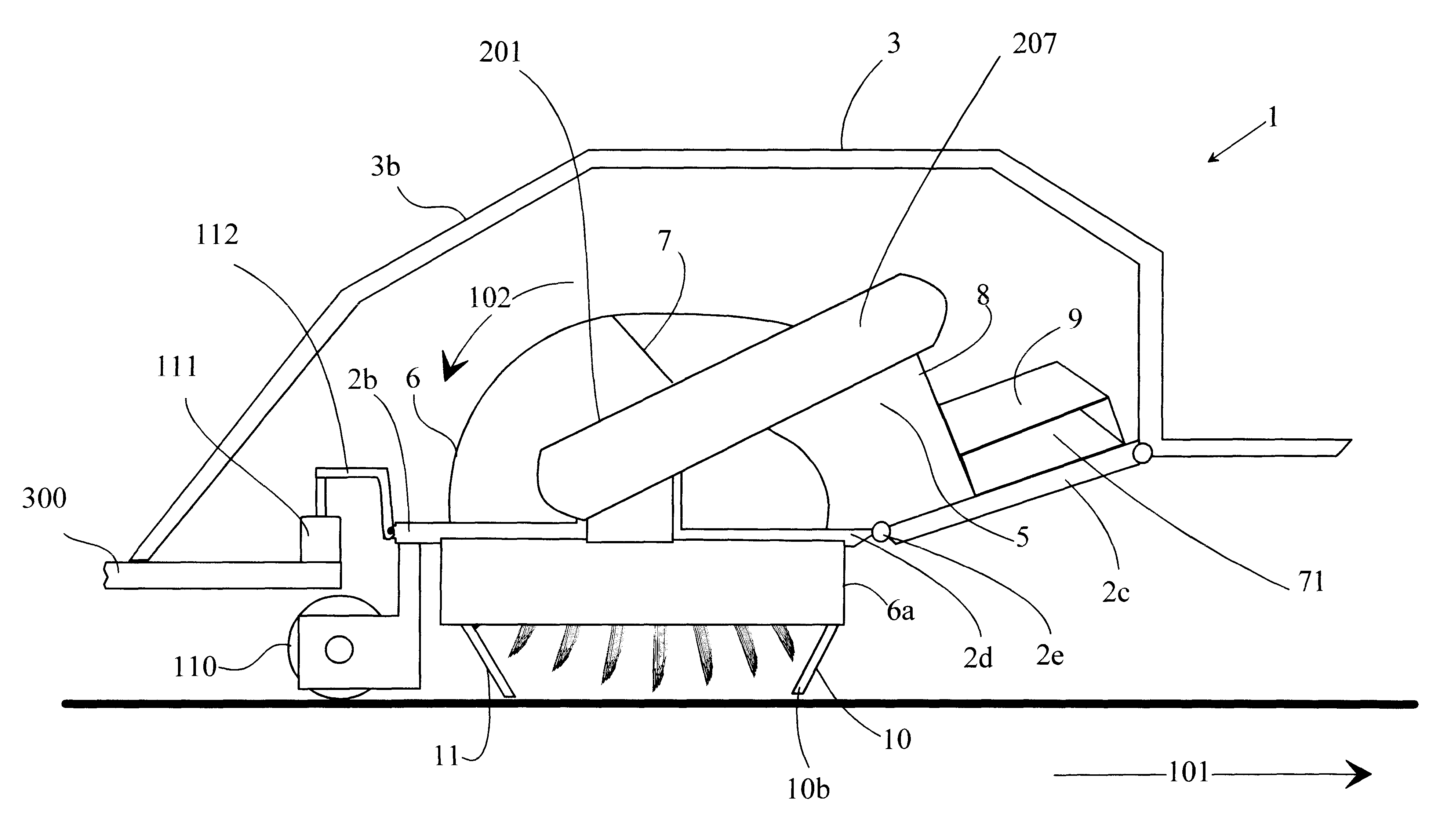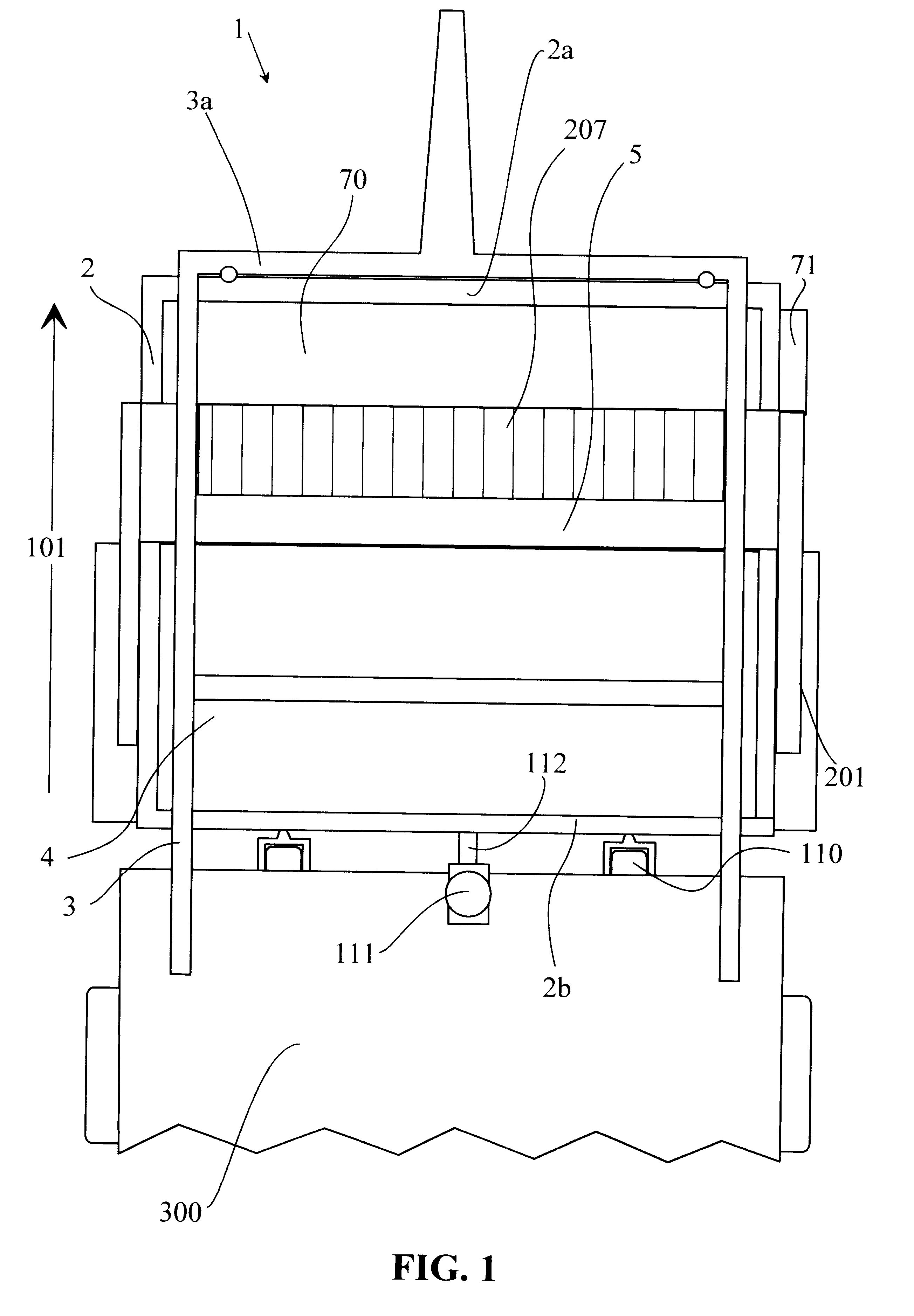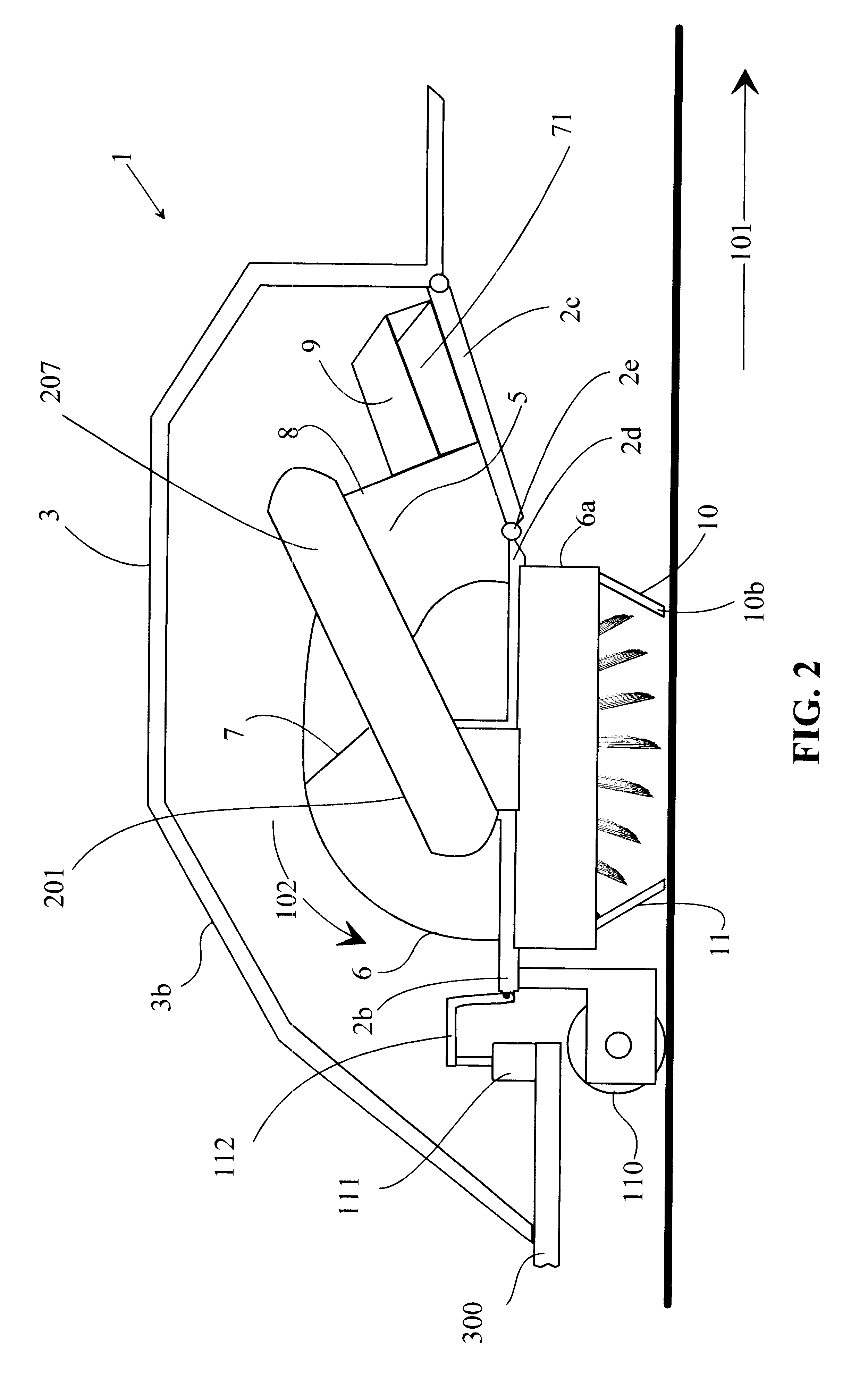Device for removing snow and other debris from ground surfaces
a technology for ground surfaces and debris, applied in the direction of cleaning ways, constructions, ways, etc., can solve the problems of snow removal by snowplows, narrow roadways, and impaired visibility for vehicle operators or pedestrians, and achieve the effect of quick and easy reconfiguration
- Summary
- Abstract
- Description
- Claims
- Application Information
AI Technical Summary
Benefits of technology
Problems solved by technology
Method used
Image
Examples
Embodiment Construction
In its Preferred Embodiment, the apparatus of the present invention is configured to be a snow removal system 1. FIG. 1 and FIG. 2 show the snow removal system i as it appears during operation. A pick-up assembly 4 is enclosed under a curved pick-up assembly housing 6 having a removable access cover 7; an impeller assembly 5 and discharge tube 70 are enclosed under an impeller assembly / discharge tube housing 8 having a removable access cover 9. During operation, the pick-up assembly 4 picks up snow and conveys it to the impeller assembly 5, which expels the snow into the discharge tube 70 whence it is discharged from the system 1 through discharge tube end 71. As can be seen in FIG. 1 and FIG. 2, the sides and tops of the pick-up assembly 4 and the impeller assembly 5 are fully enclosed during operation, thus preventing any unintended contact of operators or pedestrians with moving parts of the system 1. FIG. 10 is a partial cut-away view of the snow removal system 1 and illustrates...
PUM
 Login to View More
Login to View More Abstract
Description
Claims
Application Information
 Login to View More
Login to View More - R&D
- Intellectual Property
- Life Sciences
- Materials
- Tech Scout
- Unparalleled Data Quality
- Higher Quality Content
- 60% Fewer Hallucinations
Browse by: Latest US Patents, China's latest patents, Technical Efficacy Thesaurus, Application Domain, Technology Topic, Popular Technical Reports.
© 2025 PatSnap. All rights reserved.Legal|Privacy policy|Modern Slavery Act Transparency Statement|Sitemap|About US| Contact US: help@patsnap.com



